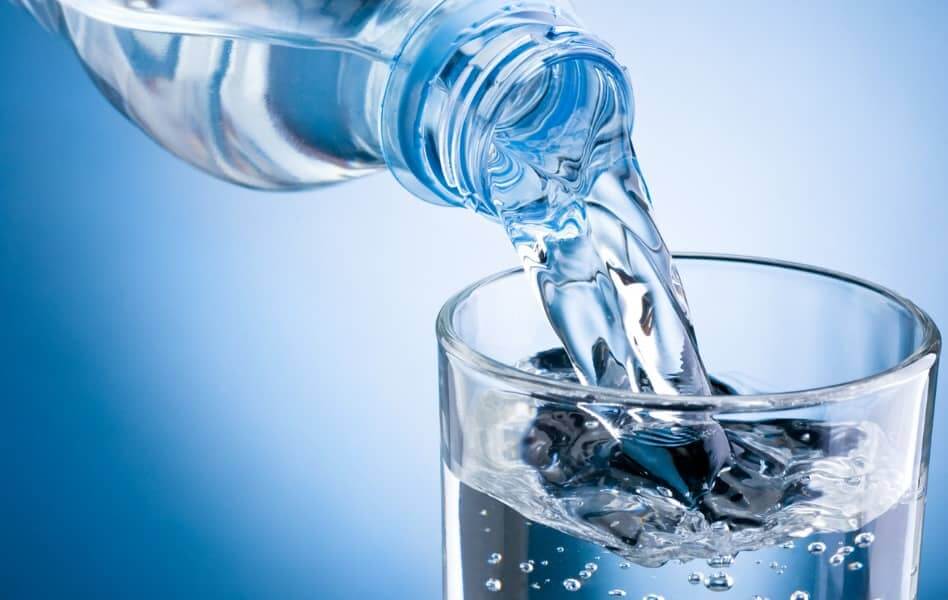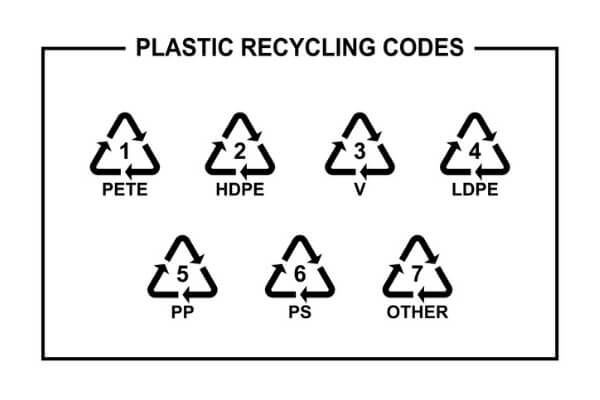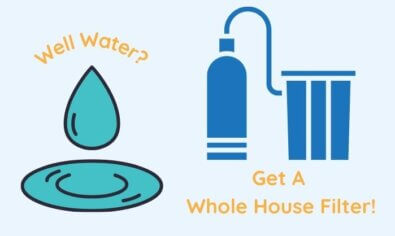How to Protect Your Health from Phthalates in Drinking Water
In this article, you will learn:
Phthalates are chemical compounds that keep plastic strong and flexible.
Many products we use every day contain phthalates, including cosmetics, detergents and food packaging.
Phthalates have been linked to several health problems, including reproductive issues, ADHD and breast cancer.
Phthalates get into Chicago water through people using plastic products every day.
The best way to remove phthalates from your water is with an NSF/ANSI 58 certified reverse osmosis system.

Phthalates are Likely in Your Drinking Water. Here’s How to Remove Them!
Phthalates are everywhere, even in the water you drink. They can also be bad for your health. It’s easy to be alarmed by these facts. And there is certainly no shortage of news stories about them these days.
So, what’s a Chicagoland resident who’s trying to protect their family’s health to do?
The crucial first step is to stay calm. It may seem daunting to confront something so prevalent in our society. So, let’s not focus on that. Instead, let’s focus on what we can control.
The good news is you can control what gets in your drinking water, including phthalates!
With that in mind, we have put together this post to help you confidently address the issue. First, we will help you understand what phthalates are and the health risks associated with them. Then we will explain how they get in your drinking water and how you can kick them back out.
In the end, you will see that while phthalates in drinking water is a significant problem, it’s also quite solvable.
What are Phthalates?
Phthalates (pronounced tha-layts) are chemical compounds most often used to improve the quality of plastic products. They help make the products stronger and more flexible so that they last longer without breaking down. There is a wide variety of phthalates in use today, some more harmful than others.
What Products Contain Phthalates?
People say phthalates are everywhere because they’re in many of the products we use all the time. It would be challenging for the average American to go a day without using something that contains phthalates. Some of the most common products include:
- Adhesives
- Cosmetics
- Detergents
- Food packaging
- Shampoos
- Toys
- Vinyl flooring
These are just a few of the many types of products that contain phthalates. And, to make matters worse, it’s not easy to identify which products they’re in, especially here in the U.S. This is because our country doesn’t require manufacturers to list “contains phthalates” on their packaging.
Still, our government has finally taken notice of phthalates in recent years. Some phthalates were named as hazardous chemicals in the Consumer Product Safety Bill of 2008. This prompted investigations into many other phthalates and a CDC report in 2014. Finally, after years of debate and concern, the Senate introduced a bill to protect consumers from phthalates in August 2021.
This progress is certainly encouraging. However, phthalates are so common in our society that it will take a long time before we can be completely safe from their harmful effects, if ever.

How Do Phthalates Get in Your Body?
Phthalates can enter the human body in many ways, including ingestion, inhalation and absorption through the skin. People often consume phthalates when they eat foods or drink beverages that came in packaging made from phthalates. The use of personal care products in such packaging also often leads to the chemicals being absorbed through the skin.
How are Phthalates Harmful?
It’s not totally clear how phthalates can harm your health. However, there are many reasons to be careful when dealing with products containing phthalates.
The harm they can cause to animals is well-documented. Studies show that phthalates cause reproductive issues in lab animals, including early onset of puberty, decreased hormone functioning and male fertility issues. It is not as clear if they cause these same effects in human men, but they likely do.
We also know that they pose a significant health risk to young children. Phthalates can stunt child growth and development, especially for males. And young children are more likely to get exposed to phthalates because they tend to put everything they encounter in their mouths.
Beyond this, phthalates have also been linked to several serious health issues, including:
- ADHD
- Autism
- Breast cancer
- Low IQ
- Type II diabetes
- And more
So, while it’s not totally clear exactly how phthalates harm the human body, there is enough evidence out there to warrant caution.
How Do Phthalates Get in Chicago Drinking Water?
That brings us to the drinking water here in Chicagoland. How do chemicals that are used in products wind up in our taps?
The reason for this is most of the drinking water in our region comes from Lake Michigan. And most of the water in our region also flows into Lake Michigan, making it the perfect place for phthalates to collect.
But how do they get there? The answer is they come from people who use phthalate products.
Illinois Water Utilities have been reporting some gross contaminants!
Check out the concerning contamination that has been reported by public water utilities in Illinois!

When you use products containing phthalates, the chemicals do not remain in your system. Instead, you get rid of them in your feces and urine. This waste then goes into the sewer and eventually comes out in Lake Michigan, where the phthalates can reside until they come back out of your tap.
We also get phthalates into our water when we bathe with products containing phthalates. The excess soap and shampoo go down the drain and wind up back in Lake Michigan, where the phthalates can be absorbed into the water again.
Phthalates can also get into the drinking water through plastic pollution, which is still a major environmental issue.
Wait, you may be thinking, doesn’t the city treat that water? The answer is yes, but municipal treatment methods aren’t sophisticated enough to remove the microscopic chemicals. So, they evade municipal treatment and find their way into your tap.

How Can You Tell If Your Water is Contaminated?
Unfortunately, it’s tough to tell if you have phthalates in your drinking water. This is because phthalates are microscopic, colorless and odorless. And as we mentioned above, if you buy bottled water, the manufacturer probably won’t clearly list “contains phthalates” on the label.
It can also be difficult to link phthalates to the health problems they cause since the symptoms of those problems often manifest themselves days or weeks after consumption.
What Steps Can You Take to Protect Your Health?
Phthalates in drinking water may seem like an overwhelming health hazard. But the good news is multiple solutions exist for homeowners in Chicagoland. You can:
- Be mindful of the products you use.
- Test your water for phthalates.
- Filter the chemicals out with a reverse osmosis water filter.
Here’s how to take each of these steps in your own home.
Be Mindful of the Products You Use
One way to break or at least slow the vicious cycle of phthalates in drinking water is to use fewer products containing phthalates. We realize this is easier said than done, but there are some ways to do this.
While companies aren’t required to write “contains phthalates” on their labels, there are still ways to identify products containing the chemicals.
One way to identify them is to look for the acronyms of some of the most common phthalates on product packaging, including:
- BBP
- DBP
- DEHP
- DIBP
- DINP
- DNOP
- DNPP
Many plastic products also have a symbol on them that indicates they may contain phthalates. It is the universal recycle symbol (a triangle made of arrows) with the number three inside it and either the “V” or “PVC” printed beneath it. The same symbol with the numbers 1, 2, 4, 5, 6 or 7 in it and different letters printed beneath indicates that the product is phthalate-free.

Test Your Water for Phthalates
You can also test your water for phthalates to see how much you are being exposed to. The problem with this step is that most common water tests don’t test for phthalates since they are so hard to detect. A special phthalate test costs hundreds of dollars, which may not be worth it. After all, phthalates are so common that the test will more than likely come back positive.
Filter Out Phthalates with a Reverse Osmosis Water Filter
The best solution for this problem is to invest in the right water treatment equipment. In this case, a reverse osmosis system will most effectively get the job done. This is because it forces water through a semi-permeable membrane that captures phthalates and many other contaminants.
Not just any reverse osmosis system will do, however. The system needs to be NSF/ANSI 58 certified. This certification indicates that the RO system has gone through rigorous tests to ensure it will give you the results you’re looking for.
Need Help Getting Clean Water in Chicago?
Phthalates may be everywhere, but that doesn’t mean we have to keep consuming them everywhere. As we’ve seen, our drinking water is one place where we can fight back. By investing in an NSF 58 certified RO system, you can keep phthalates away.
Need help fighting back against phthalates? At Angel Water, we help families throughout Chicagoland get the pure, contaminant-free water they deserve every day. Please get in touch with us today to have a helpful discussion with one of our clean water experts!
Interested in a Water Softener System for Your Home?
You don’t have to live with a dry, itchy scalp and brittle hair anymore! It would be our pleasure to help you find the right water softener to make your showers enjoyable again.
Please give us a call at (847) 382-7800 or visit our water softener page to learn more.




